Composites: materials of the future

Steffi Graft and Ivan Lendl form a unique pair in the world of tennis in the male modality. Both use carbon fiber reinforced resin sponge or racket. The transmission of the stroke achieved with this material pushes the ball better, favoring the wrist more.
Mr. Singh was an Indian cricketist, a high quality player. An accident forced him to cut his right leg at knee height. After recovering from the consequences of this intervention, Singh followed a muscular rehabilitation program prior to the implantation of the aluminum prosthesis. This prosthesis was too heavy for the player to regain his first lightness. It was replaced by an epoxy layer and fiberglass prosthesis, weighing 2.1 kg. This prosthesis allowed the player Singh to reach a launch speed of 85 km/h, with a maximum speed of 110 km/h before the accident. Subsequently, the evolution of these materials has allowed this player to apply an artificial leg of 1.4 kg of weight. This has allowed him to reach the maximum shooting speed he had in his day.
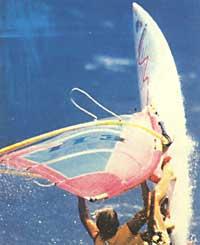


The Canadian hockey team has started using a glass fibre reinforced resin stick since last year. Thanks to this stick, the acoustic reverberation that is achieved when the player hits the ball disappears, increasing the power of the hit. There are currently national groups that have started using similar materials.
New material
Ski, bicycle, lenticular wheel… all these products have a relationship between the materials they form, that is, the composites. Six years ago, the word was almost unknown in our environment, and is currently used in many fields and areas. The criterion used to fix the epochs passed by humanity is, in some cases, that of material. That is why we often speak of the Stone Age, the Bronze Age, the Iron Age and the Steel Age. We can therefore say that we are immersed in the Composite Age with a similar terminology.
But what are these materials that have disrupted the concept of composite or material? Although the term composite has a confusing and broad meaning, it is usually called the association of two macroscopically heterogeneous materials, whose properties are better than those of each component in general. The most common case among composites is that of fiber composite material and a matrix. A continuous material called matrix is reinforced with a fiber that improves the mechanical properties of the set. The function of the matrix will be to save the set and transmit efforts.

As an example of this type of composites we can cite the one usually used in cars. The Citröen house has manufactured the rear door of your BX with a material of these characteristics. In this case, a corrosion-resistant polyester resin has replaced the steel plate. For mechanical properties similar to steel (stiffness and strength), polyester resin is reinforced with fiberglass. In addition, the adhesion that generates an appropriate interface or bond between resin and fiber will improve the composite's tendency to impact on steel. Therefore, it seems logical that the Peugeot-205, Renault-5 or Renault-11 models use shock absorbers with these materials.
Ancient idea
The idea of reinforcing material by a fiber is as old as human civilization. Thousands of years ago, in ancient Mesopotamia, clay reinforced with toz was a common material for construction. Clay interprets an adaptable matrix in this composite. The straw, for its part, gave the whole the stiffness and resistance so necessary for the construction, acting like fiber.
Since then the materials have changed totally and humanity too, but the concept of composite is similar. Therefore, and individually, the two materials not valid for an application, form a new material with improved properties forming a heterogeneous but useful set. And as soon as this material was closed to technological maturity, the composite concept broadly covered all areas and spheres of our society. This happened after World War II, due to the huge evolution of organic resins.

These polymeric materials had two main properties (useful for certain areas): being insulating for construction and electrical applications, and lightness for transport applications. However, the mechanical properties of these materials were too weak, making it impossible to replace conventional materials when high rigidity or mechanical strength was needed.
On the other hand, along with the evolution of these organic resins, there has also been considerable progress in the manufacturing technology of the fibers that would be used to reinforce. Among them stands out the fiberglass, which for its quality / price ratio has a greater use.
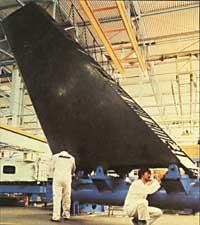
The manufacturing process of this fiber consists of the fusion of molten glass, formed by syllables, through a series of tubes, after a high-speed pulling process. Car bodies, buses, exterior and interior trains, fishing rods, aircraft interiors and other parts are mainly composed of fiberglass. The shape of this fiber in each case will depend on the application. For example, unidirectional long fiber can be used. Also a two-dimensional fabric, forming a two-dimensional dispersed set called “mat” or forming multidimensional shapes. Therefore, the world of composites has a new variable, that of form.
Dream Reality
Bodywork, insulation and similar products have been mentioned. But how to get a structural part with better properties than steel? What until recently was a dream of designers, has become a reality thanks to carbon fiber. Carbon fiber is a more rigid material than steel, weighing FIVE times less. As an example, you can see in the image the motto that follows the Airbus-320. This motto consists of epoxy resins and carbon fibers.
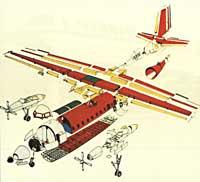
Helicopter propellers and rotors are currently also manufactured. The wide use of composites in aeronautical applications has made possible the manufacture of undetectable aircraft with radars. And if it's convenient to get special impact resistance, Kevlar has a lot to do. Armor and its use in bullet wars (vests) have something to do with it.
The composite has at least two components. Each of them can be a different material. They have different applications and obvious mechanical properties: high lightness, electrical insulation, interesting thermal properties and corrosion resistance. However, we have not yet mentioned two of the most outstanding advantages that this type of material can have: anisotropy and its ability to integrate parts and functions.
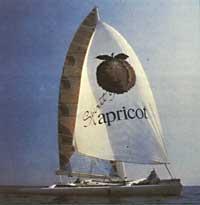
What about anisotropy? Since composites are made up of fibers, we can guide them in the directions in which mechanical efforts should be applied. For example, in the design of a bar that goes through pure traction, it would be logical to use a composite of unidirectional fibers. If mechanical stress were torsion, we would take the cylindrical tissue or the coiled fiber as a suitable solution. Why spend material in unnecessary directions? What do we get with unnecessary properties? This ability to design according to every need can become a huge tool for the designer.
But this advantage also has its mistakes. Although the optimization of the design of these materials offers exceptional opportunities, this requires the designer a great knowledge of the composites. More than one has defined composites as “letter material”. Each customer has a need. A product for every need. And each product has a different material. The material must be designed with the piece.
Functionality

The capacity for integrating functions has also been mentioned. Let us explain this concept by example. In 1983 the Peugeot house decided to design a new piece of composites for its new model. The model was the 405 we know today. At the front of the car, under the hood, there are thirty components with different functions; shock absorber bracket, radiator, lamp holder, etc. The idea devised by Peugeot was to design a housing that met the following objectives:
- Shock absorber support with a structural function.
- Improve the torque resistance of the car façade, forming a right-to-left axis.
- Facilitate the assembly of all components and parts that make up the front of the car.
This allows the use of robots, significantly reducing the costs of this process.
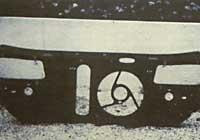
For the achievement of these objectives was designed in composite (S.M.C. “Sheet Moulding Compound” with polyester resin and fiberglass as main components). The previous module is shown in the image. This part is mounted entirely in a block in the manufacturing chain, facilitating work and reducing costs. In this case, the consequence of the use of composites has been the integration of the functions of the different parts into one, the increase of the reliability of the part and the reduction of the assembly costs. Composites have aroused a fondness for design.
Both aeronautical applications and parts manufactured for land vehicles have been mentioned. But what about the sea? The last sailboat presented by Great Britain in international competitions has been an 18-metre long trimaran. The sailboat called “Spirit of Apricot” has a cost of more than 50 million pesetas and has been built mainly with epoxy resin and carbon fiber. The designer, Barry Noble, says: All means have been used to achieve the largest ratio called “thrust/weight”. The most advanced materials have been used: carbon fiber in the hull and floats and titanium in hydraulic circuits at high pressure. Don't think this case is an exception.
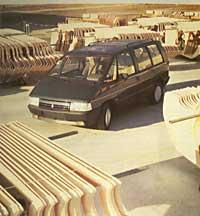
The dissemination of these materials has been highlighted in this field. 95% of recreational boats carry composites. The composite has 99% of sailboats less than 9 meters long, 92% of which are between 9 and 12 meters long and 79% of those over 12 meters long. In this case, the lightness, corrosion resistance of these materials and their fondness for design are the main causes of this substitution.
What about the future?
And what do we say about the future? So far the dissemination of these materials has been extraordinary. The next step in this evolution can be the addition to the large series of automobile manufacturing. However, the transformation processes of composites have not yet reached the maturity achieved by conventional materials. But this march is improving. Currently there are processes that allow to manufacture 500 pieces a day with a mold. And the one-minute processing time is hardly a utopia. Technical service (Thermoplastiques renforcées par estampage).
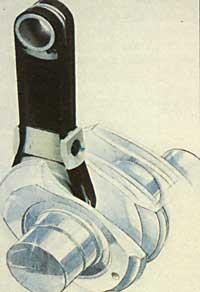
Using this technique, thermoplastic composite sheets are cold processed through a process similar to metal stamping. The main advantage of this process is the recyclability of the materials used, since they are thermoplastic materials. The low level of automation presented by these transformation processes makes it difficult to disseminate. This heavy lift is a problem that can be solved depending on the increase of series through the use of automatisms.
The materials mentioned above are the most common, with organic matrix. However, new matrices and fibers are being generated every day in this field. The composite concept has been translated into metallic and ceramic materials. Metal alloys are reinforced by ceramic fibers forming metal matrix composites (M.M.C. Metal Matrix Composites). These materials are currently widely used in the aeronautical field, as they have unique properties. Fragile ceramics are also reinforced with ceramic fibers, obtaining difficulty material; Ceramic Matrix Composites (C.M.C.) the so-called.

The manufacture of diesel engine pistons with these materials is currently mentioned. Again fiber-reinforced ceramics, such as the ancient clay of Mesopotamia... On the other hand, new organic matrices called PEEK, PES, PSP, etc. have also been created. that can exceed 350ºC.
The tissues currently used will be forgotten. The new matrices will replace the current ones. But the composite concept will move forward. It is more than pure material. Maybe new design idea.
Buletina
Bidali zure helbide elektronikoa eta jaso asteroko buletina zure sarrera-ontzian











